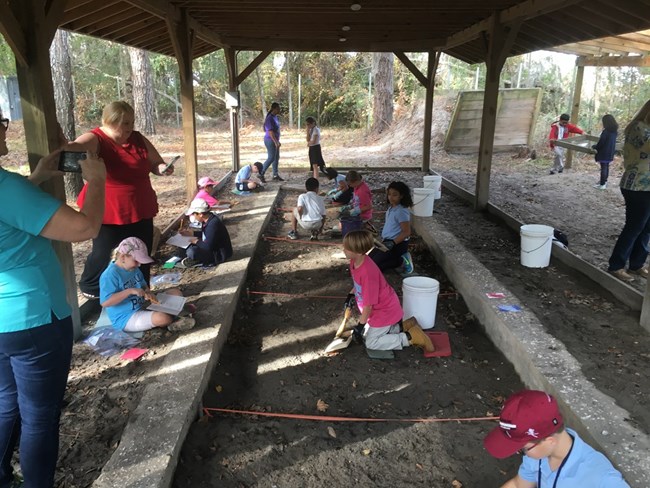Part of a series of articles titled Creative Teaching with Historic Places: Selections from CRM Vol 23 no 8 (2000).
Article
Teaching with Historic Places in the Parks: Digging History at Fort Frederica

Published by the National Park Service, Cultural Resources
by Noelle Conrad
“On the serene, isolated west shore of St. Simons Island, Georgia, the ruins of a once flourishing 18th-century settlement stand. A powder magazine overlooks Frederica River, a reminder of the fort that protected the British colonies against the Spanish during the early-18th-century struggle for control of the southern frontier of English occupation in the New World. The excavated foundations of various structures remind visitors that from 1736 to 1758, the planned community of Frederica served the military garrison quartered there and housed a civilian population.”
So begins the Teaching with Historic Places lesson plan, “Frederica: An 18th-Century Planned Community” by Marion Robinson. Georgia curriculum standards require learning about colonial history in the fourth grade and Georgia history in the eighth grade. Fort Frederica National Monument satisfies both these requirements. The lesson plan, consisting of activities, readings, and historic and modern maps of the fort, town, and southeast region, though written at an eighth grade level, provides supplemental material for an active fourth-grade program.
In 1994, Fort Frederica National Monument established an archeology education program in collaboration with the Glynn County school system. Each year, over 1,100 fourth-grade students excavate artifacts in a disturbed archeological site at the park and analyze the unearthed artifacts in an archeological laboratory located at a nearby school. Teachers use the curriculum, Discovering Our Past Through Historical Archeology, to facilitate the study of archeology to students. Over 20 hours of classroom time is spent on topics ranging from concepts to theory, and from field work and laboratory analysis to report writing and artifact conservation. The TwHP lesson developed on Fort Frederica filled in the missing historical content needed. In 1998, age-appropriate lessons for the fourth grade, entitles Frederica Families, were developed and added to the archeology curriculum.
Visitation to Frederica by eighth-grade students and their classes statewide occurs during the spring academic season. “Frederica: An 18th-Century Planned Community” continues to serve Georgia’s classrooms. Access via the Internet has created an opportunity not only for Georgia’s teachers and students but also for teachers nationwide to learn about one of our national treasures.
At the time of publication, Noelle Conrad was Education Specialist, Boston Support Office, National Park Service; formerly Interpretive Park Ranger/Education Coordinator, Fort Frederica National Monument, Georgia.
Last updated: July 2, 2019
